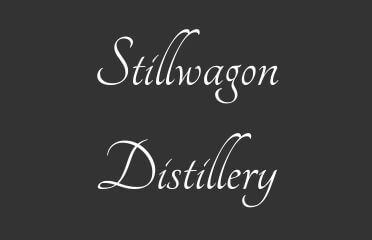Contest News
Delivered to your inbox

By Clicking “Sign Me Up”, you confirm you have read, understand and agree to our Privacy Policy

Stillwagon Distillery’s Story – Our distillery is located in the small fishing village of Charleston on Seven Devils Road. We hand craft all of our products, with the exception of our whiskey which we collaborate with Seven Devils Brewing Co. to produce. We produce our rums and vodka from sugarcane in the form of molasses and cane sugar. Fermentation is accomplished in our repurposed stainless steel milk cooler. Distillation is perfomed in our hand made stills. Our silver rum is allowed to rest a short while in stainless steel barrels then bottled. The gold rum and cask strength gold rum are aged in new, charred, American Oak barrels produced in Missouri. The large variety of infused rums are made with real fruits and spices, blended as needed, and most are allowed to rest in used oak barrels for varying amounts of time. Bottling, labeling, and sealing with wax are all done in the distillery by hand.
Some of our products are infused with fresh fruits we source locally and in nearby states. All of these fruits are processed by hand, sometimes with the help of friends who volunteer (generously compensated) to assist with the short time frame that fruit is useable. These infusions are very time consuming as the fruit has to be prepared, put in the rum, removed and filtered out of the rum, flavor has to be adjusted, then it can go on to rest and be bottled.
That makes our products truly hand crafted. Small volumes, and hand labor affects the cost of a product. We work hard to be as efficient to keep our prices as competitive as possible.
I am often asked, what made you want to start a distillery? Inevitably it is a long story of which I will share a portion here:
It all started with a Koi Pond. I have long been enamored with pond culture and the beautiful Koi fish. I have built several ponds over my time to house these fish and play at creating a self-sustaining ecosystem. As with everything I do, I look at what others have done and what is best for the subject, in this case, the fish. Generally, warm, clean water is best for Koi. Koi are a relatively hardy carp, but the ones I ordered were raised in the warmth of Florida. So when I got mine, they started dying due to a suppressed immune system due to the cold water.
Warming a large amount of water is an expensive hobby. I tried electric heaters, and found them to be way too costly to run. So I started looking at alternative fuels and greenhouse like structures over the pond to retain heat. I settled on experimenting with pellet stoves. You can automate and regulate the consumption of fuel much easier than with a wood stove. The first pellet stove I used was an old conventional electric operating stove I found on Craigslist. I built a heat exchanger for the fire box and fabricated a hydronic heating system for the fish tank. It worked well enough until the auger fried. So I began my research into non-electric pellet stoves. I found three on the market. The one that I found to be most suitable was the Wiseway Pellet stove invented by Gary Wisener.
I contacted Gary, and being an inventor, he was intrigued with the use I had planned for his stove and helped me with the heat exchangers. The short story here is when I plumbed the heat exchangers, I wanted to test the ability to heat water. I did a simple convection circulation system. The way I plumbed it initially, I got steam from the second heat exchanger.
The steam lead down a variety of new tangents: steam heat, steam engines, Sterling engines, water distillation, and fuel ethanol distillation. I pursued all of these avenues, but water distillation was the most inexpensive to begin with. We built the distillation column and began distilling water with the pellet stove. Then it was suggested that if you can distill water you can distill ethanol as it takes less heat because of the lower vaporization temperature.
I also had a steam engine built for me in India that took a substantial amount of capital, built a greenhouse, and began experiments in aquaculture and aquaponics. These ventures began to get rather expensive and I needed to start making more money than I was spending. This is when we began down the road to distilled spirits.
The paperwork for the permit was extensive and took a year to get approved. We had to be fully invested, meaning we had to have all our equipment purchased, set up, and the location leased prior to approval. This required selling most of our possessions and moving from Washington to Oregon where we are now located on the coast in Charleston.
How we chose to produce rum was a result of research in what was being made in Oregon and what the market competition looked like. Rum is one of the smaller sections in the liquor store, and a spirit not as commonly made in Oregon. I think the major reason is that sugarcane isn’t grown in our region of the country. But, molasses is readily available and is where the origin of rum lies.
We now produce 18 different rums, have a whiskey aging, and produce a vodka that is well liked locally.
The story doesn’t end there. I am still pursuing other technologies surrounding water purification, recycling, waste heat reuse, aquaculture, aquaponics, CO2 capture and remediation, composting and vermiculture, etc. These all play a part in the big picture of Stillwagon Distillery.
We are passionate about supporting them. Come along, we are sharing amazing stories & images that will inspire and entertain you.
